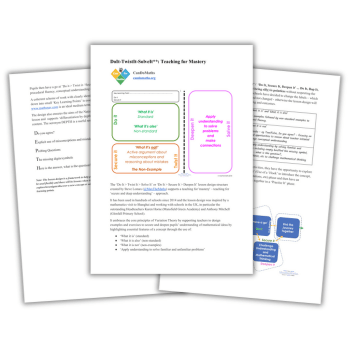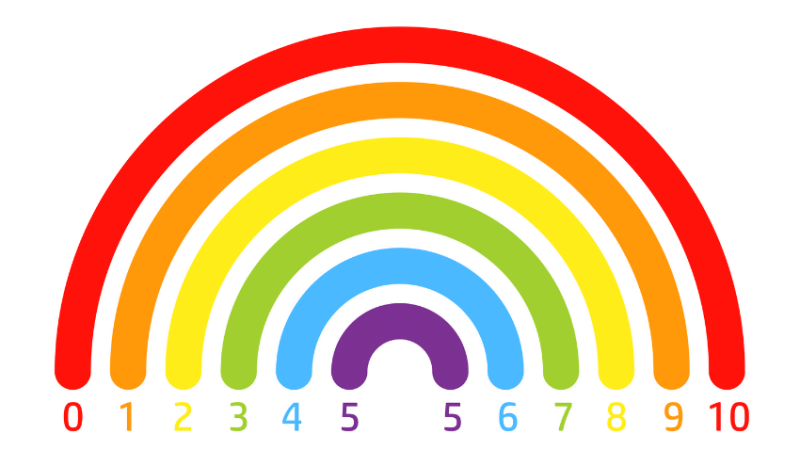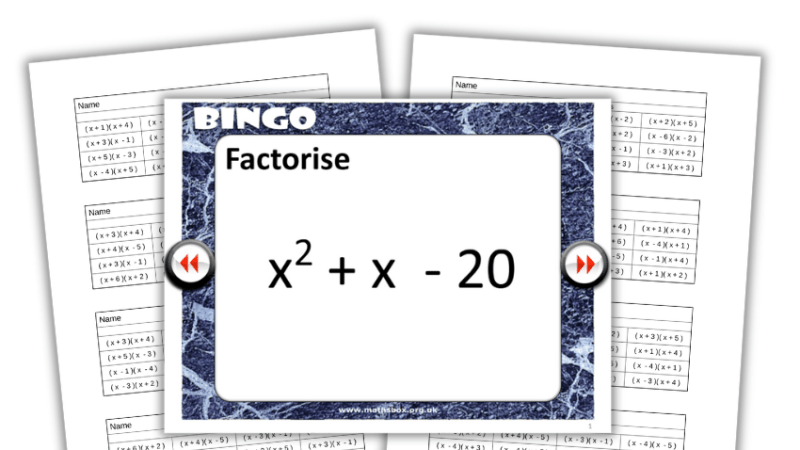Maths mastery – What success looks like

Getting to grips with maths can often conjure images of tediously repeating times tables, but implementing a mastery approach will take children’s learning much deeper…

Over the last few decades, there has been a significant shift in how we approach maths. This has undoubtedly made the teaching of the subject both more exciting and more effective. The mastery approach to maths has been a large part of this move.
The aim of the maths mastery approach is for pupils to develop a deep understanding of maths, rather than just being able to memorise key procedures or resort to rote learning.
It consists of Five Big Ideas: coherence, representation and structure, mathematical thinking, fluency, and variation.
Almost a decade after first being introduced to teaching for mastery, I have learned so much about primary maths instruction.
I’ve seen children’s confidence, enjoyment and understanding of the subject grow beyond measure.
The process is one of continual learning. However, here are the five key steps I’ve found most useful in implementing it…
Whole-school approach
The first step is agreeing a whole-school approach. Part of this is understanding the culture, vision, systems and philosophy that underpin teaching for mastery. This can be done in many different ways.
For example, a school I worked with recently had all staff write ideas on sticky notes, answering questions such as, ‘What should be in our maths lessons?’ and ‘What will the culture be in our maths lessons?’.
This collective mind-mapping meant they were able to collate ideas. They then came to the decision that they wanted a culture that welcomed making mistakes.
You can find an introduction to all this via your local Maths Hub and NCETM’s free ‘Mastery Readiness’ programme.
Preparing to implement teaching for mastery consists of your Maths Hub’s readiness lead supporting your school to strengthen five key areas of teaching and learning, including:
- the vision and culture underpinning maths learning
- mathematical mindsets
- subject expertise
- school systems
- arithmetical proficiency
As the years go by, you can move from the preparatory phase through development, building, and refinement phases. But the important part is to make sure the whole school is on board at each point.
Curriculum sequencing
It’s essential to undertake curriculum sequencing to ensure that the order of lessons works for your children. They should be able to build upon prior knowledge as they progress through school.
Pupils in every year group need to be able to apply their knowledge practically before moving on to more abstract contexts.
All your maths lessons should feature pre-developed stem sentences. This will ensure consistency and clarity of language and terminology for all children.
For example, ‘a fraction is an equal part of the whole’, and ‘the inverse is a reverse operation’.
Each lesson should also ensure that all pupils are exposed to fluency, reasoning and problem-solving tasks. We want everyone to learn together; at our schools we have looked carefully at our use of language.
For example, we’ve stopped Year 2 teachers saying, ‘Subtraction calculations always start with the number that has the greatest value,’. This creates a misconception for when children reach Year 4 and learn about negative numbers.
Mastery approach
Building up mathematical knowledge and skills from Reception all the way through to Year 6 develops confidence and efficiency. You need to be realistic about timeframes; teaching for mastery is not something that can be completed in a year.
Quite often, it takes two, three or even four years to really see the impact. This might sound slow, but it’s worth it – and reinforces why a whole-school approach is so important.
Often, one of the biggest obstacles in implementing a new approach is changing mindsets.
I’ve found that a little bit of training every now and then allows staff to see the potential of teaching for mastery. Linking up with teachers and schools in your area who are at a similar point in their journey is invaluable, too.
Sharing good practice between schools and observing high-quality lessons will improve confidence in the process.
Continuous learning
The idea is to see the mastery approach to maths as a continuum. We are nine years into it and are still developing the Five Big Ideas. The difference is that children now have a much better understanding of maths, and are able to confidently apply what they’ve learned.
A large part of the success of this is down to the fact that alongside the change in pedagogy that’s come with teaching for mastery, we’ve also had a change in culture, and growth mindset is now at the heart of everything we do.
Learning to celebrate mistakes and not label pupils using fixed tags of ability has had an enormous impact on staff and children alike.
Mastery training
CPD is a big part of the mastery approach, so maintaining a programme of training is key (and might even help you reduce staff turnover).
Ongoing training means that staff are kept up to date with the pedagogy behind teaching for mastery, and have the opportunity to collaborate with teachers from other schools who are also refining their practice (see the ‘refinement phase’ of the NCETM’s breakdown of teaching for mastery, linked above, to learn more about its impact).
Keep it up, and you’ll reap the benefits in the long term.
Finally, remember no scheme can fully implement teaching for mastery for you.
High-quality schemes of work can provide you with some of the tools needed to teach a lesson using the approach.
But, unless you fully understand the lesson and have adapted it to meet the needs of your children, it will not work. You are leader of learning in your classroom; and what a privilege and joy that is.
Five Big Ideas
Coherence
Curriculum sequencing is key. Each lesson should be the next ‘small step’ in understanding a concept, and within each lesson, each question also acts as a small step. Nothing is immovable in teaching for mastery – it’s all adaptable to suit your class.
Representation and structure
Using equipment or images is essential to support children in understanding the structures behind maths ideas. For example, using Base 10/Dienes to show why when we exchange three tens for 30 ones in short division, the dividend (whole number being divided) stays the same.
Mathematical thinking
Just having key vocabulary up and asking children to say it back to you is not going to build understanding. Instead, make sure you have plenty of stem sentences available, which correctly define key words. Also ensure you repeat these terms with actions and in context throughout the lesson. For example, ‘A fraction is…’, ‘The inverse is…’.
Variation
Showing children one way to do something will not develop deep understanding. Instead, try to expose them to variation in all lessons. Show concepts in different ways and slightly tweak questions so that they can focus on the element that is changing.
Fluency
This should go beyond learning facts. Developing a number sense so that children have the tools to find answers is a much more robust system. For example, if a child understands the calculations behind the seven times table, rather than just memorising it, they’ll be more likely to be able to calculate the 14 times table later down the line.
Malcolm Watson is primary maths lead at the Meridian Trust. Follow him on X (formerly Twitter) @MathswithMalcolm










